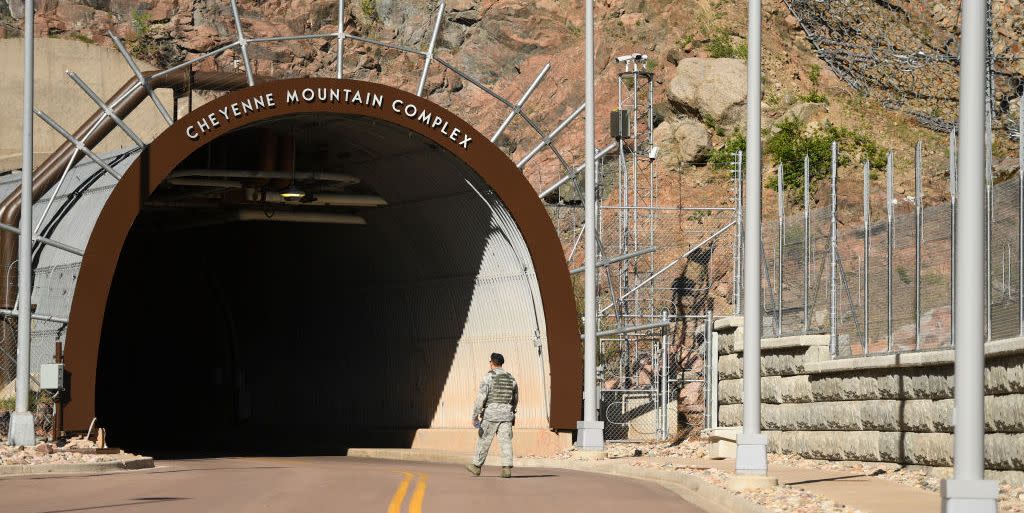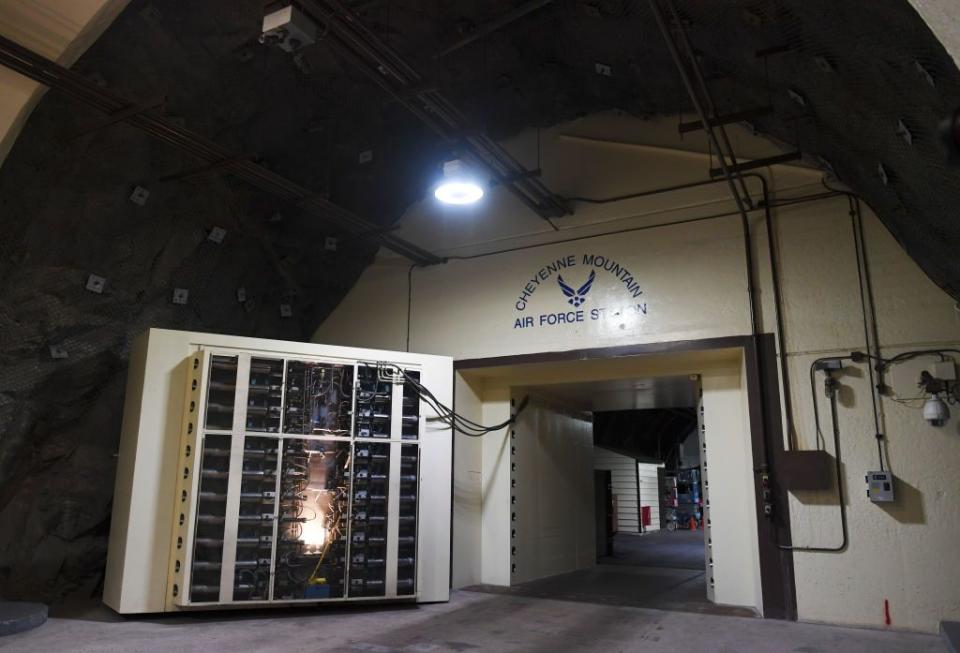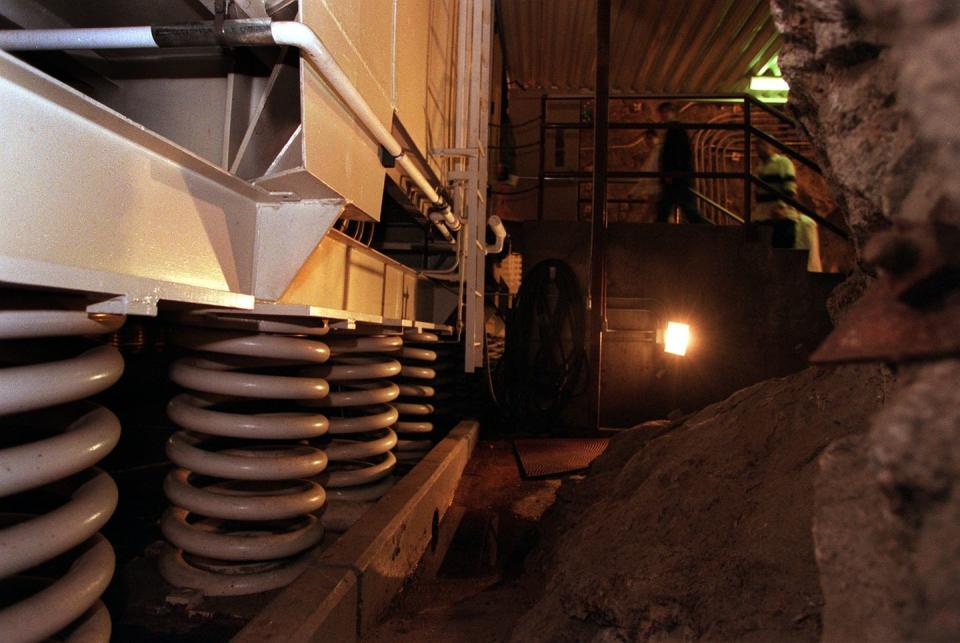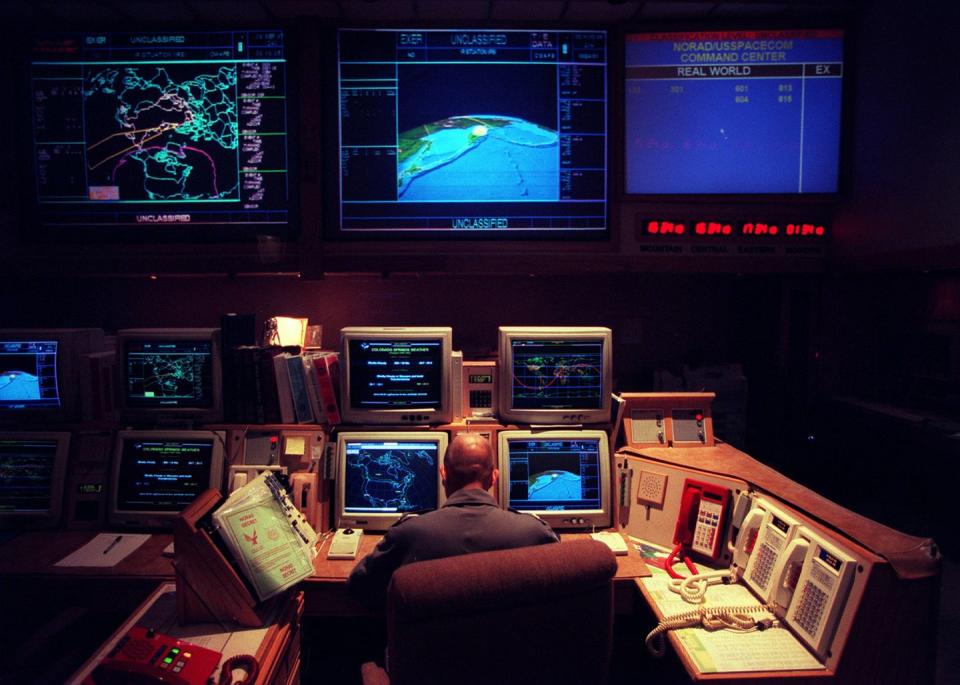NORAD’s Cheyenne Mountain Fortress Is Back in Business

The Pentagon reactivated its underground redoubt as backup homeland defense headquarters.
The North American Aerospace Defense Command complex in Colorado was designed to ride out a nuclear attack. The base was closed in the 2000s but reopened due to the COVID-19 pandemic.
The base will take over air defense for the nation in case the primary base closes due to illness.
One of the U.S. Military’s most enigmatic military bases is open for business again because of the COVID-19 pandemic. Cheyenne Mountain, an underground facility carved into granite rock, was designed to deal with a nuclear attack on the U.S. and Canada. Its first real crisis, however, is the ongoing global pandemic. The base is up and running as a backup to the primary NORAD base, and its personnel is living in isolation to prevent them from picking up the virus.
The base at Cheyenne Mountain was built in the 1960s as the headquarters for North American Aerospace Defense Command, or NORAD. NORAD is a joint U.S.-Canadian military command tasked to keep a watch on air and space, tracking objects approaching North America. The command was originally set up to track Soviet bombers, then ballistic missiles. After 9/11 it was also assigned a homeland defense mission, monitoring commercial airspace for signs of hijackings.
Cheyenne Mountain was designed to survive a nuclear attack and continue its early warning mission. The facility is carved out of solid granite and the entrance is protected by 25 ton steel doors. Buildings constructed inside sit on giant, 1,000 pound steel springs to absorb the shock of a nuclear blast. At its peak 1,800 U.S. and Canadian military personnel manned the facility, and dorm-style housing, cafeterias, food, water, and electricity made the facility self-sufficient in emergencies.


Over the years thermonuclear weapons grew more powerful, making Cheyenne Mountain more vulnerable to attack. The facility became less important after the end of the Cold War, and in 2006 NORAD’s main functions were moved to nearby Peterson Air Force Base. Cheyenne Mountain was only lightly occupied, capable of being reactivated in the event of a crisis.
Well, it’s 2020 and the crisis is here. In late March, according to The Washington Post, NORAD decided that the main facility at Peterson needed a backup in case it was shut down by pandemic. The U.S. military has about 5,000 cases of the coronavirus and the possibility of NORAD being no longer able to function was a real one.

As the defender of North American aerospace, NORAD must keep its core functions running 24/7. The Post reports approximately 130 personnel were sent to Cheyenne Mountain to perform 12-hour watch shifts from the deep underground facility. The personnel live at Peterson and the nearby Air Force Academy. They are kept entirely separate from other military personnel, their take-home meals packed and kept waiting for them. They even use alternate entrances into the facility, apparently taking a different entrance than the one made famous by the movie Wargames and the TV show Stargate SG-1.
So 60 years after it was built, Cheyenne Mountain is finally being used in a national security crisis—just not the one its original designers foresaw.
Source: Stars and Stripes
You Might Also Like

